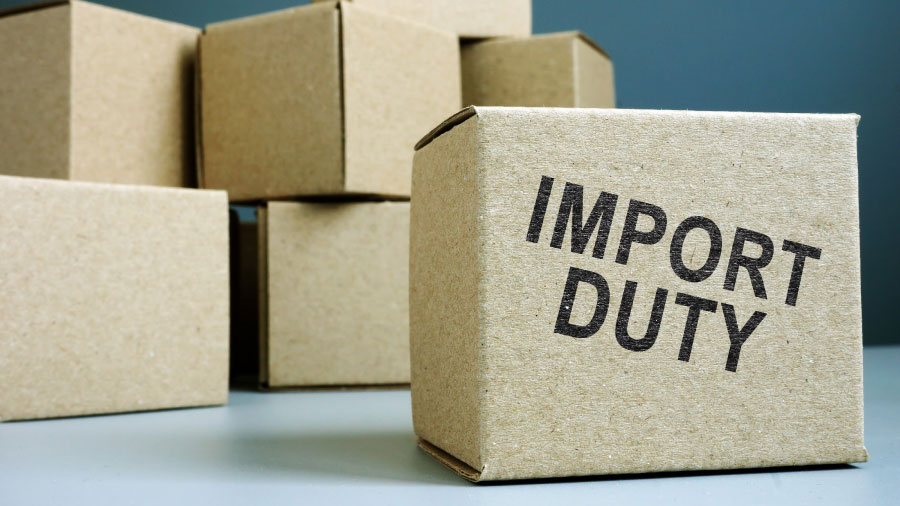Customer and Supplier Names
Accounting software helps you track the numbers, but in a lot of cases, you need to anchor those numbers to additional details related to your customers or suppliers. For instance, you may want supplier details in your accounting software so you can note the businesses to which you’re issuing payments.
Similarly, if you’re sending an invoice to a client or issuing a receipt for a customer, you also need their details as well. Thankfully, QuickBooks has the ability to import that information automatically so you don’t have to spend hours keying customer or supplier names.
You can import these details directly from an Excel spreadsheet. You can also save a list of contacts from popular email programs such as Outlook and Gmail onto your computer, and then convert that information into an Excel file that you can import into QuickBooks.
To import a list of customers, suppliers, or even employees from Outlook, follow these steps:
- Select File.
- Choose Open and Export.
- Click on Import/Export to open the Import/Export Wizard.
- Select Export a File.
- Choose CSV as your file format.
- Find the folder where you keep your customer, supplier, or employee information.
- Keep in mind that you will need to import each of these categories separately.
- Follow the on-screen instructions to save the file.
- Save the file to your desktop so you can find it easily. Otherwise, make a mental note of where you save the file on your computer.
If you want to export contacts from Gmail, the process is relatively similar. First, you need to find your contacts. On the traditional version of Gmail, you click Gmail on the top left-hand side of the page. Then, you should see a short drop-down menu, with Contacts as one of the options.
You can find Contacts by hitting the Apps icon on the top right-hand side of the page. The Apps icon is nine little squares, and it’s next to the small bell that you select to get alerts. After selecting contacts, follow these steps:
- Click More.
- Select Export.
- Choose Outlook CSV and click Export again.
- Make sure to save the file somewhere you can easily find it on your computer.
Once you have a CSV file of your contacts, you can open that file using Excel. When you open the CSV file, you need to make sure the files you downloaded have the following fields in row one of each of the following columns:
- A – Full Name
- B – Company
- C – Email
- D – Phone
- E – Mobile Number
- F – Fax
- G – Website
- H – Street
- I – City
- J – State
- K – Postal Code
- L – Country
- M – Opening Balance
- N – Opening Balance Date
- O – Business Number
You may need to delete, add, or move around columns from your original CSV file to make this possible. Even if you don’t have some of this information on your clients, you still need to leave the column intact. For instance, if your clients don’t have fax numbers, you still need Fax to be noted in column F of the top line of your spreadsheet, but you can leave that field blank for your contact. The opening balance and the opening balance date fields are also optional, but again, to ensure that everything goes smoothly, you should have those fields at the top of the spreadsheet.
QuickBooks does not import these fields, but the app uses them for mapping purposes. This means these fields tell QuickBooks where to put the data. After your sheet is organized, save it as an .xls or .xlsx file.
Now, you can finally start to import these details into QuickBooks. To do that, hit the gear icon on your QuickBooks dashboard. Then, select Import Data and choose Customers or Suppliers. Select Browse, and when the list of files pops up, choose the Excel file you just saved. Then, select Open, hit Next, adjust data as needed, and finally hit Import.
If everything doesn’t transfer in seamlessly, go back to your Excel file. Double-check that the information is in the right order. Get rid of any unwanted spaces. If possible, cut down on the number of characters. Some fields have restrictions on the maximum number of characters you can have, but the character limit is usually pretty generous so you typically don’t have to worry about it.
For instance, you can only have 255 characters in the city field, and most cities can fit easily into that character restriction.
Also, look over your formatting. As a general rule of thumb, names can’t have quotation marks or colons. Email addresses must have the @ symbol and a period, and they must not have any spaces. Websites need a valid URL format, meaning they must start with “http://www” or an equivalent such as “https://”. Generally, those are the only formatting requirements you need to keep in mind.
You can also import customer records directly from Gmail to QuickBooks without dealing with Excel. Note that this only works for customer records. You cannot use this tactic to import supplier or supplier records. Also, this technique doesn’t add the records permanently. It only lets you add these details to an invoice.
In QuickBooks, start a new invoice. Then, select Add New from the customer dropdown box, and choose Connect Your Gmail Account. Select Allow, and then complete the invoice as usual.


